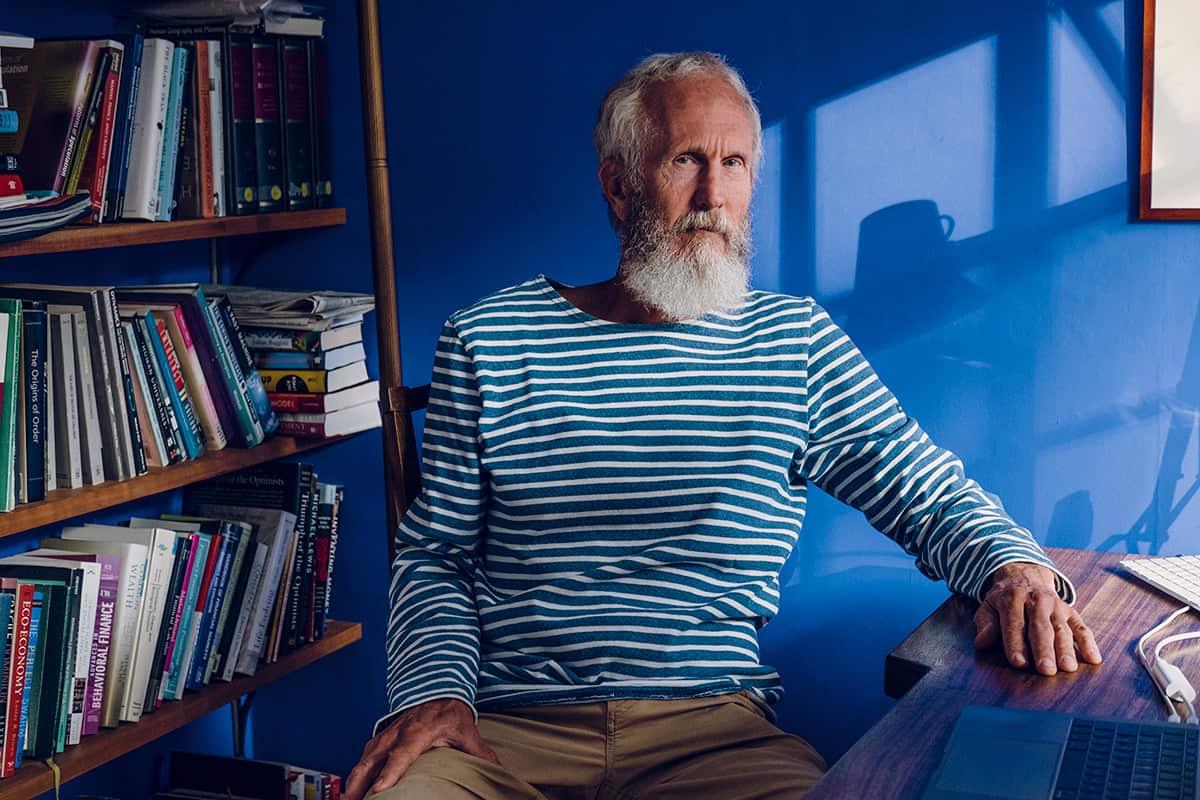J Doyne Farmer – a physicist who has studied the economic impact of the COVID-19 pandemic – talks to Benjamin Skuse about lockdown easing and the prospects of financial recovery

As an American living in the UK, how do you think the US has handled the economic response to the pandemic?
I can’t help but wonder what drugs US stock market investors are taking. Stock prices have been ridiculously high since Donald Trump was elected and now we are seeing the consequences of that coming to roost with his complete mismanagement of the pandemic. I think the long-range economic situation is worse than the stock market seems to think it is. There has been no co-ordination in the management of the pandemic at a national level and it remains unclear when things will stabilize. The US has not frozen the economy by keeping workers in place, as most European countries have done.
What are the consequences of this?
There is a dangerous “Keynesian” feedback loop running. If people become unemployed then they don’t spend. If they don’t spend, products don’t sell and more people become unemployed. To prevent this from happening again the US government needs to take firm action. While there have been large stimulus packages, I don’t think they are large enough and they have been implemented in a very inefficient way.
You recently presented a new model of the economic impact of the current COVID-19 crisis. Were there any unexpected results?
We worked together with IHS Markit – a leading data provider – to build a model that could predict the impact of the crisis on different industries. We saw some surprising network effects. For example, we discovered that opening more industries can actually make things worse if the wrong industries are opened (arXiv:2005.10585). This problem happens because during the lockdown period many industries were not able to produce at full capacity. If the demand for the products of an industry is more than it can supply, it becomes necessary to ration its output
How might this happen?
Suppose industry A produces a critical input for industry B, and industry B produces critical inputs for other industries as well. Then if industry C is opened, and industry C uses the product of industry A as well, industry A may now supply even less of its product to industry B. And if industry B supplies products to many different industries, this can reduce the output of the whole economy. So in any partial reopening of the economy, it’s important to open the right industries. Our model allowed us to investigate questions like this and make detailed recommendations. We are now waiting for government reports and other data that will allow us to test our results and find out how we did.
What can be done to minimize risks of reopening certain parts of the economy that harbour more epidemiological risk?
Let me begin by saying that we aren’t epidemiologists. We were able to use detailed data about the tasks performed by occupations and we knew which occupations are employed in each industry. Combining this with epidemiological studies allowed us to estimate how much the infection rate was likely to go up by opening a given industry. Broadly speaking, we predicted that the increase in the infection rate from industries that supply other industries is substantially smaller than it is for consumer-facing industries. Our recommendation was to open business-to-business industries, but restrict consumer-facing industries. This was roughly in line with what the government did in the beginning.
My hope is that the pandemic makes inequality so intolerable that people will rise up, take action and implement some lasting changes.
But you are not supportive of the UK government reopening higher-risk consumer-facing industries such as pubs as it did last month?
I’m fairly sceptical. The UK has not got the epidemic under control in the same way that most European countries have. It will make a huge difference if we really have an aggressive track-and-trace system with free and widely available testing. But so far we don’t have that.
Do schools present a similar risk as reopening consumer-facing industries?
The effect of opening schools is difficult to predict and it depends on how it is done. Many schools are coming up with creative ways to partially reopen, like organizing students into bubbles or having the students quarantine at regular intervals. Of course, because so many people depend on schools for childcare, this cannot be separated from reopening the economy.
Do you think this crisis is going to increase the disparity between the rich and the poor?
In the short term, the pandemic is definitely making inequality even worse than it already is. We saw this in our first paper, where we predicted who could work from home and who couldn’t, and who is in essential and non-essential industries. The conclusion is that the poor are bearing the brunt of the pandemic because they can’t work from home and they’re less likely to work in essential industries. So in the short term the pandemic is clearly making things worse.
And in the long term?
It’s putting pressure on the system, it’s making people more aware and it may be a catalyst for change. There are a lot of changes we can make to fix the problem. We need to tax the rich more, we need to give workers more power to organize and we need a higher minimum wage. My hope is that the pandemic makes inequality so intolerable that people will rise up, take action and implement some lasting changes.



